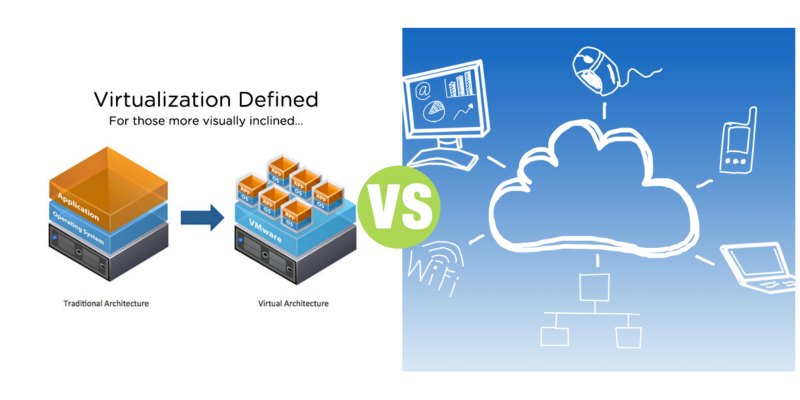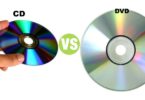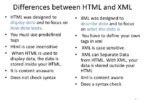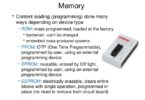Virtualization vs Cloud Computing
Summary: Difference Between Virtualization and Cloud Computing is that virtualization is the practice of sharing or pooling computing resources, such as servers and storage devices. Server virtualization provides the capability to divide a physical server logically into many virtual servers. From the end user’s point of view, a virtual server behaves just like a physical server. While Cloud computing is an Internet service that provides computing needs to computer users. When the company uses the computing resources, they pay a fee based on the amount of computing time and other resources that they consume.

Virtualization
Due to the often dynamic nature of enterprise computing needs, IT administrators often use virtualization to adapt quickly to the change. Virtualization is the practice of sharing or pooling computing resources, such as servers and storage devices. Server virtualization provides the capability to divide a physical server logically into many virtual servers. From the end user’s point of view, a virtual server behaves just like a physical server. The advantages of server virtualization are that a virtual server can be created and configured quickly, does not require a new physical server, and is easier to manage.
Storage virtualization provides the capability to create a single logical storage device from many physical storage devices. For example, hard disks from many different servers located in geographically disparate areas can be combined to appear as a single hard disk to the users of the storage. The advantages of storage virtualization are that the storage can be configured quickly, may not require the purchase of additional storage devices because the necessary capacity already may exist, and is easier to manage than traditional storage.
Cloud Computing
Cloud computing is an Internet service that provides computing needs to computer users. When the company uses the computing resources, they pay a fee based on the amount of computing time and other resources that they consume. Cloud computing allows a company to diversify its network and server infrastructure. Some cloud computing services automatically add more network and server capacity to a company’s Web site, as demand for services of the Web site increases.
The network and server capacity may be duplicated around the world so that, for example, a single outage of a server does not affect the company’s operations. Read Looking Ahead for a look at the future of cloud computing. Grid computing combines many servers and/or personal computers on a network, such as the Internet, to act as one large computer. As with cloud computing, a company may pay for the use of a grid based on the amount of processing time that it needs. Grid computing often is used in research environments, such as climate research and life science problems. For example, the SETI@home project uses a grid of millions of personal computers around the world to search radio signals for signs of extraterrestrial life.
Also Read:
Difference Between Grid and Cloud Computing
Difference Between Cloud Storage and Cloud Backup
Difference Between Internet and Cloud Computing
Difference Between Cloud Computing and Green Computing
Difference Between Cloud Storage and Cloud Computing







Leave a Comment
You must be logged in to post a comment.